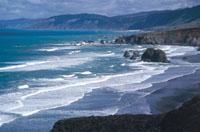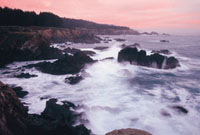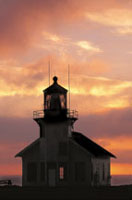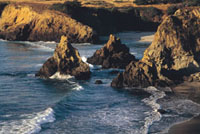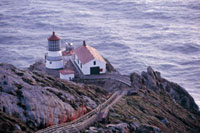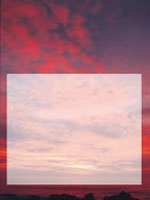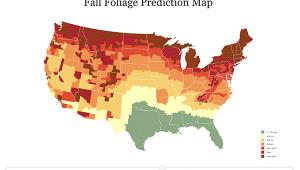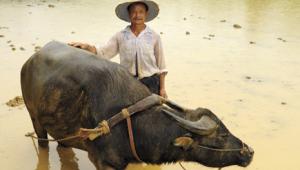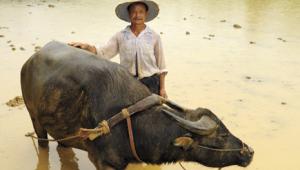California's Lost Coast
One Photographer's Shangri-La
Ansel Adams had Yosemite,
for Edward Weston it was Point Lobos, while Galen Rowell prefers places
with mostly vertical surfaces. It seems that every photographer has
his/her special place, a place where all seems in balance, we feel most
alive, and the land speaks to us on a level that can only be described
as spiritual. For me that place is California's Lost Coast. This
wondrous meeting of land and sea stretches from Marin County just north
of San Francisco to the Sinkyone Wilderness above Fort Bragg and has
everything from sleepy fishing villages, semi-tacky tourist traps, old
growth Coastal Redwood forests, 19th century lighthouses, and wind swept
rocky promontories. I have driven, hiked, bicycled, and kayaked this
part of the world for nearly 25 years and never cease to wonder at its
beauty and, once you leave the influence of San Francisco's urban
sprawl, its solitude. That's not to say it doesn't sometimes
get crowded, but if you avoid the heavier travel times, especially July
and August, it can be unbelievably remote and serene. The area is naturally
more crowded during the prime vacation times but the typical summer
marine layer, read fog, means the weather is actually nicer in the spring
and fall when there are fewer folks about. Winter can also be fantastic
with storms blowing in from the Northwest and the surf crashing over
rocky headlands but be warned, it rains a lot on the Lost Coast. |
|||
Most travelers will remain
on US Highway 101 after crossing the Golden Gate Bridge but we want to
follow California Highway 1 north toward Stimson Beach. If you haven't
seen it and if it's not too crowded, stop at Muir Woods. This lovely
grove of Coastal Redwoods was named for naturalist John Muir and there
are many photo opportunities. This section of road can be quite crowded
as Stimson Beach is a popular weekend getaway for folks who live in the
"City," but after Stimson Beach the traffic will thin out
considerably. Just beyond Stimson Beach is the little town of Bolinas
which is sometimes hard to find as some local wags, known as "The
Bolinas Border Patrol," often take down the highway signs that point
the way. Here Highway 1 skirts the Bolinas Lagoon which is a birder's
paradise, especially in the winter when as many as 60 species, totaling
over 30,000 individuals, have been seen. It's also a great canoe
and kayak spot but be sure you have an up-to-date tide table or you could
spend several hours sitting in the mud waiting for the water to come back.
|
|||
We again turn inland, this
time through country dotted with diary farms, until we eventually rejoin
the ocean at Bodega Bay. Here the main claim to fame is Alfred Hitchcock's
use of Bodega and Bodega Bay as locations for the classic horror movie
The Birds. Later on we pass Fort Ross, with its famous Russian Orthodox
Chapel. The fort is a reconstruction of the Russian fur trade center that
flourished here in the 19th century. The Russians were, for a long time,
the dominate culture and left a strong heritage. There are numerous Russian
Gulches and of course, the Russian River which serve as reminders of their
influence. Campgrounds abound along this section of coast but one of my
favorites is the Sonoma County campground at Stillwater Cove. Try to be
there in the evening so you can take a sunset hike along the bluff trail
that starts across the highway from the campground. It's a great
hike any time of day but at sunset it can be especially enchanting. |
|||
I admit to being a lighthouse
nut. I love to explore and photograph them and in general, just like to
be around them. One of the more recognizable on the West Coast, due to
its featured role in the Mel Gibson movie Forever Young , is the Point
Arena lighthouse (our cover photo). Be sure and climb the 145 steps to
see the first-order Fresnel lens. This lens was shipped all the way from
France and contains 666 individual prisms, each of which had to be polished
everyday. The rotational mechanism, which used a falling weight for power,
had to be reset every four hours so you can see lighthouse keepers didn't
have very much spare time. |
|||
Mendocino, well-known as the
stunt double for Cabot Cove in Angela Landsbury's Murder She Wrote,
has been transformed from a backwater artist's colony to a world-class
tourist trap. But it is not without its charm. You can still camp on a
hill overlooking the ocean for under 20 bucks a night, or rent a canoe
or bicycle at the whimsically named Catch-A-Canoe; prices aren't
too steep and if your family is tired of watching you take pictures, there's
lots to see. For paddlers, the Big River goes inland for several miles
and makes a great side trip and you'll spot herons, egrets, kingfishers,
and possibly river otters. Get a tide chart though as the Big River is
tidal and you don't want to spend the whole day paddling uphill.
Another great family spot is Van Dame State Park located just south of
Mendocino. |
|||
AdThis one is the Point Cabrillo
lighthouse. The access road is a little hard to find and there's
a bit of a hike but it's really worth the effort. The lighthouse
itself is about a mile from the Cabrillo Point Road, and you can't
drive to it. But don't fret, the walk is an easy one, and I've
never seen more than one or two other people all the times I've
been there. Sunset is the obvious time to shoot the lighthouse, but it
can be spectacular in the early morning as well. |
|||
Noyo Harbor, which is a real
working harbor, is just run down enough to be a photographer's dream.
I like to be there at sunrise when things are just starting to happen
and will shoot for a couple of hours before packing it in to get breakfast.
The US Coast Guard has several surf boats stationed in the harbor and
there are commercial fishing operations plus a small pleasure boat marina
as well. The harbor, which is actually the Noyo River, can be reached
from the south side or the north with either offering interesting possibilities.
There is a sizable group of Stellar's sea lions that are spoiled
beyond belief and make great models. From the south side of the river
you can get quite close to them but they can be photographed from either
side. |
